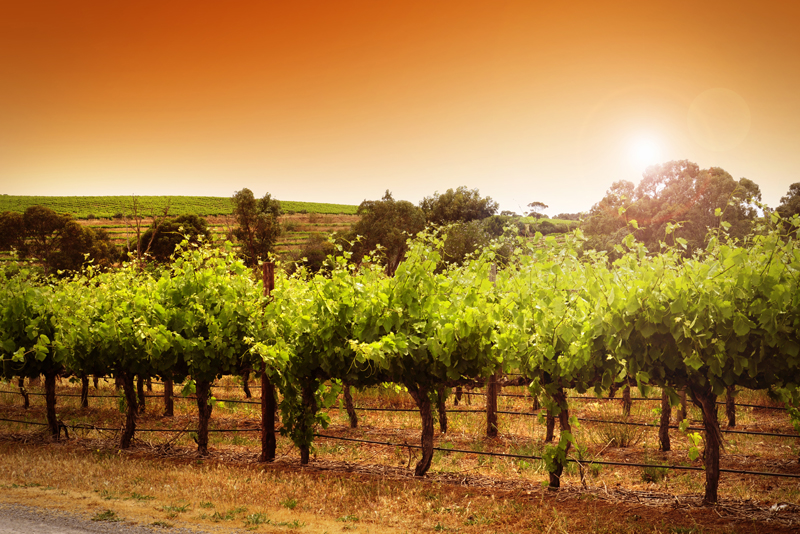California Earthquakes

California is an unusual state in many ways. Beyond its Mediterranean climate, shared by three percent of the world’s land masses, it is geologically quite different from the rest of the United States. As part of the Pacific “Ring of Fire”, California is at the center of the world’s earthquakes and volcanoes.
The “Ring of Fire” is a horseshoe-shaped area that that circles the Pacific Ocean. It begins in the southern part of the Chilean coast, continues up through Peru, Central America, and the Pacific coast of the United States and Canada, and turns south again east of Alaska. It then follows an ocean route that covers the Japanese, Filipino, and Javanese archipelagos before kicking back east and then south again. Finally, it tapers off below Tonga, to the west of Australia and New Zealand. Geologically quite active, the Ring of Fire is known for mountains and volcanoes. The latter are caused by magma from the center of the earth protruding through cracks. At the same time, high massifs and deep trenches are caused by cracks in the earth’s surface mantle, creating tectonic plate that push against and sometimes slide below each other.
California actually has twenty volcano areas, although most are considered dormant. Mount Shasta and Mount Lassen are the two most obvious ones, but areas such as Clear and Mono Lakes were also created by volcanic activity – although, here, when the volcanoes blew, they flattened into depressions and then were filled by water. Most of the volcanic sites in the state, with the exception of Clear Lake, roughly parallel the Cascade/Sierra range.
Beyond the volcanoes, there are fault lines crisscrossing the coastal part of California as well as the southern mountain and desert areas. Fault lines are where tectonic plates meet; when these plates slide or push, earthquakes occur. The San Andreas Fault is perhaps the best known; it begins in the low desert east of the Salton Sea and travels through the high desert and central part of the state to exit into the Pacific Ocean right below San Francisco. This fault line was the cause of both the 1906 San Francisco earthquake and the 1989 Loma Prieta earthquake (the latter occurred south of the city but was large enough to cause great damage to the Oakland/San Francisco Bridge an hour’s north). Surprisingly, the large earthquakes (1971, 1989, and 1994) that have occurred in the Los Angeles area are not associated with the San Andreas Fault, but rather with other fault zones that lie underneath the area.
Since recorded history, most United States earthquakes have occurred on the Ring of Fire, with the balance of them in California. Most earthquake damage, however, has not occurred because of earthquake activity, but rather from the displacement of water caused by earthquakes and resulting in tsunamis occurring at some distance from the tremor. Crescent City in the extreme northwest of California was devastated in 1964 by a tsunami (another wave also savaged Hawaii) caused by a quake in Alaska; in 1946, a bigger earthquake in the Aleutian Islands ravaged all three states.
While earthquakes can be deadly, loss of life is often caused by the geological equivalent of secondary infections. The 1906 earthquake, for example, is associated with 3000 deaths, but the total is due to the combined effects of earthquake, weak masonry, and fire. If caught in an earthquake, it is important to stay calm, act rationally, and avoid the panic that often causes poor decisions (such as the one which caused someone to jump out of a shower window in the 1989 Whittier Narrows quake – the man forgot that he lived on the second floor.) Use the ‘duck and cover’ procedure (crouch under a desk or table, covering the back of the neck) to vital organs and the spinal cord. After the shaking has stopped, carefully leave the building. Once outside, stay away from any downed wires and follow any procedures as directed by local police, fire, or paramedic personnel.
The “Ring of Fire” is a horseshoe-shaped area that that circles the Pacific Ocean. It begins in the southern part of the Chilean coast, continues up through Peru, Central America, and the Pacific coast of the United States and Canada, and turns south again east of Alaska. It then follows an ocean route that covers the Japanese, Filipino, and Javanese archipelagos before kicking back east and then south again. Finally, it tapers off below Tonga, to the west of Australia and New Zealand. Geologically quite active, the Ring of Fire is known for mountains and volcanoes. The latter are caused by magma from the center of the earth protruding through cracks. At the same time, high massifs and deep trenches are caused by cracks in the earth’s surface mantle, creating tectonic plate that push against and sometimes slide below each other.
California actually has twenty volcano areas, although most are considered dormant. Mount Shasta and Mount Lassen are the two most obvious ones, but areas such as Clear and Mono Lakes were also created by volcanic activity – although, here, when the volcanoes blew, they flattened into depressions and then were filled by water. Most of the volcanic sites in the state, with the exception of Clear Lake, roughly parallel the Cascade/Sierra range.
Beyond the volcanoes, there are fault lines crisscrossing the coastal part of California as well as the southern mountain and desert areas. Fault lines are where tectonic plates meet; when these plates slide or push, earthquakes occur. The San Andreas Fault is perhaps the best known; it begins in the low desert east of the Salton Sea and travels through the high desert and central part of the state to exit into the Pacific Ocean right below San Francisco. This fault line was the cause of both the 1906 San Francisco earthquake and the 1989 Loma Prieta earthquake (the latter occurred south of the city but was large enough to cause great damage to the Oakland/San Francisco Bridge an hour’s north). Surprisingly, the large earthquakes (1971, 1989, and 1994) that have occurred in the Los Angeles area are not associated with the San Andreas Fault, but rather with other fault zones that lie underneath the area.
Since recorded history, most United States earthquakes have occurred on the Ring of Fire, with the balance of them in California. Most earthquake damage, however, has not occurred because of earthquake activity, but rather from the displacement of water caused by earthquakes and resulting in tsunamis occurring at some distance from the tremor. Crescent City in the extreme northwest of California was devastated in 1964 by a tsunami (another wave also savaged Hawaii) caused by a quake in Alaska; in 1946, a bigger earthquake in the Aleutian Islands ravaged all three states.
While earthquakes can be deadly, loss of life is often caused by the geological equivalent of secondary infections. The 1906 earthquake, for example, is associated with 3000 deaths, but the total is due to the combined effects of earthquake, weak masonry, and fire. If caught in an earthquake, it is important to stay calm, act rationally, and avoid the panic that often causes poor decisions (such as the one which caused someone to jump out of a shower window in the 1989 Whittier Narrows quake – the man forgot that he lived on the second floor.) Use the ‘duck and cover’ procedure (crouch under a desk or table, covering the back of the neck) to vital organs and the spinal cord. After the shaking has stopped, carefully leave the building. Once outside, stay away from any downed wires and follow any procedures as directed by local police, fire, or paramedic personnel.

Related Articles
Editor's Picks Articles
Top Ten Articles
Previous Features
Site Map
Content copyright © 2023 by Korie Beth Brown, Ph.D. . All rights reserved.
This content was written by Korie Beth Brown, Ph.D. . If you wish to use this content in any manner, you need written permission. Contact Korie Beth Brown, Ph.D. for details.







